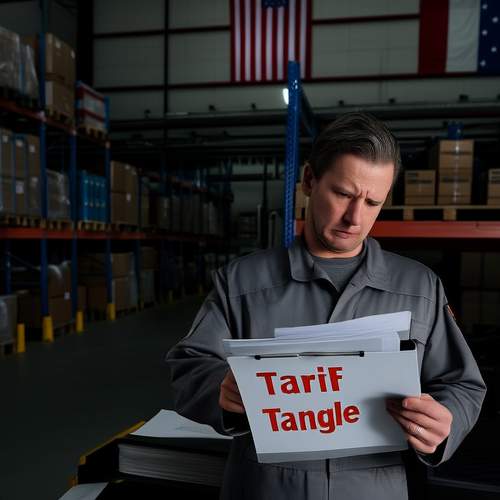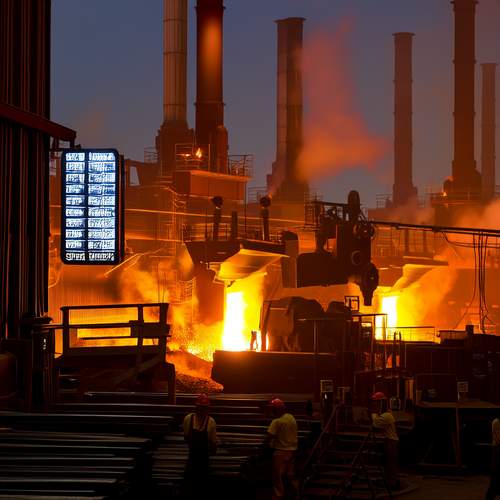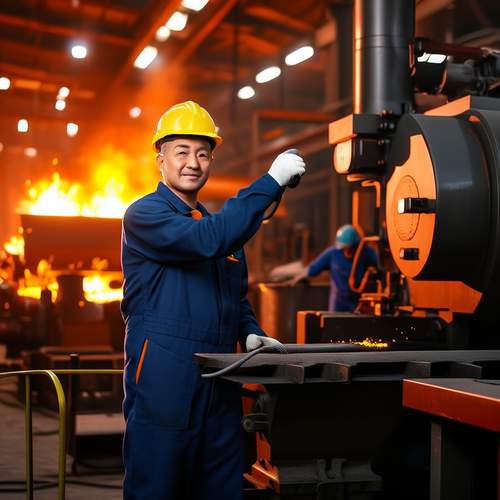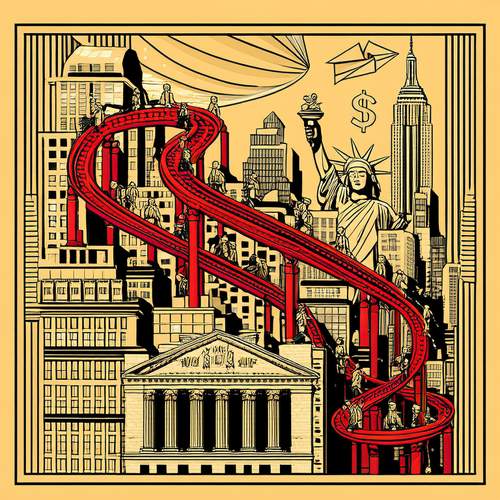On Monday, US stocks experienced a modest uptick as investors grappled with the implications of President Donald Trump's decision to double tariffs on steel and aluminum imports. This move, which is set to take effect on Wednesday, has reignited trade tensions with China and sparked concerns about a potential global trade war. Despite these anxieties, the Dow Jones Industrial Average closed higher by 35 points, the S&P 500 gained 0.41%, and the tech-heavy Nasdaq Composite index rose by 0.67%. However, the broader financial landscape was marked by significant volatility, with the US dollar weakening and gold prices surging as investors sought safe havens.
The Impact on Financial Markets
While US stocks opened lower, they managed to recover and close higher, reflecting a mix of investor sentiment. The US dollar index, which measures the dollar's strength against six major foreign currencies, fell by 0.65%, indicating a loss of confidence in the currency amid renewed trade concerns. Meanwhile, Treasury yields increased as investors sold bonds, a move often associated with expectations of higher inflation or economic uncertainty.
Gold prices surged by 2.8%, highlighting investors' preference for traditional safe-haven assets in times of geopolitical and economic turmoil. This trend underscores the ongoing uncertainty surrounding trade policies and their potential impact on global markets. According to Ulrike Hoffmann-Burchardi, CIO for global equities at UBS Global Wealth Management, "We continue to expect market volatility as investors digest fresh tariff headlines and incoming US economic data. Fiscal worries remain and geopolitical tensions are heating up."
Trade Tensions with China and the EU
The tariff increase on steel and aluminum imports is part of a broader escalation in trade tensions. Trump claimed on Friday that China had violated a trade truce agreed upon last month, prompting Beijing to accuse the US of "provoking new economic and trade frictions." This accusation comes as the European Union also threatened retaliation unless a "mutually acceptable solution" is reached with Washington. Olof Gill, the European Commission spokesperson for trade, warned that "both existing and additional EU (counter) measures will automatically take effect on 14 July — or earlier, if circumstances require."
These threats of retaliation have added to the uncertainty in global markets. The EU's stance, in particular, highlights the potential for a tit-for-tat trade war that could disrupt supply chains and impact economic growth worldwide. The US's position as the world's largest single-country importer of steel, importing 26.2 million metric tons from 79 countries and territories last year, underscores the potential scale of disruption.
Sector-Specific Impacts
The impact of the new tariffs is felt differently across various sectors. Shares of automakers fell on Monday, with Ford dropping 3.85%, Stellantis sliding 3.55%, and General Motors declining by 3.87%. These declines reflect concerns that higher steel and aluminum costs will increase production expenses and potentially reduce profit margins.
Conversely, shares of US steelmakers surged, with Cleveland-Cliffs jumping by approximately 23%, and Nucor and Steel Dynamics each gaining around 10%. These gains indicate that domestic steel producers stand to benefit from higher prices and increased demand as imports become more expensive.
Global Market Reactions
The ripple effects of the US's trade actions were evident in global markets. In Asia, Hong Kong's Hang Seng index closed down by 0.6%, Australia's S&P/ASX 200 fell by 0.2%, and Japan's Nikkei 225 declined by 1.3%. South Korea's KOSPI, however, managed to close up by 0.1%. European markets were also mixed, with the Stoxx Europe 600 index falling by 0.14%, Germany's DAX sliding by 0.28%, and France's CAC dropping by 0.19%. London's FTSE 100 edged higher by 0.02%.
These declines highlight the interconnectedness of global markets and the potential for US trade policies to have far-reaching impacts. Susannah Streeter, head of money and markets at Hargreaves Lansdown, noted that "new fractures in the global trade war open up," citing Trump's threatened steel and aluminum tariffs and the flare-up in US-China tensions. She added that these developments create "a big setback for steel manufacturers around the world, with orders set to be disrupted yet again."
Investor Sentiment and Market Predictions
Investor sentiment remains cautious, with many expecting continued volatility as the trade situation evolves. Paul Donovan, chief economist at UBS Global Wealth Management, noted that while investors increasingly assume that the US will stage a "rapid retreat" from new tariff threats, "there seems to be less confidence in that being the case this time" over steel. He explained that steel tariffs are not at risk from the recent US court ruling that temporarily blocked the bulk of Trump's global tariffs (a ruling later paused by an appeals court and the levies restored the next day).
Donovan added that Trump's reaction to questions about investors' expectations of repeated retreats from tariff positions suggests that the president does not want the reputation of always climbing down on tariff announcements. This stance could signal a more prolonged period of trade uncertainty.
Chris Beauchamp, chief market analyst at trading platform IG, suggested that Monday's global market falls had been "relatively restrained" because investors expect Trump to back away from his new steel tariff threat. "Despite talking a very tough game, the administration seems to have no appetite for the kind of market volatility that would come with a full-blown trade war," he said.
Navigating Uncertainty
The recent developments in US trade policy have created a complex and uncertain environment for investors and businesses alike. While US stocks managed to close higher on Monday, the broader financial landscape was marked by significant volatility, with the dollar weakening and gold prices surging. The potential for a global trade war, driven by escalating tariffs and retaliatory measures, poses a significant risk to economic stability and growth.
As investors and policymakers navigate this turbulent period, the ability to adapt and respond to changing conditions will be crucial. For businesses, particularly those in the steel and automotive sectors, the challenge will be to manage increased costs and disrupted supply chains. For investors, the focus will be on identifying safe-haven assets and diversifying portfolios to mitigate risk.
In this context, the coming weeks will be critical in determining the trajectory of global trade relations. The outcome of ongoing negotiations and the potential for further tariff adjustments will shape the economic outlook for the remainder of the year. As the situation continues to evolve, the need for clear and consistent communication from policymakers will be essential in restoring confidence and stability to global markets.

By Benjamin Evans/Jun 3, 2025

By Samuel Cooper/Jun 3, 2025

By Lily Simpson/Jun 3, 2025

By Eric Ward/Jun 3, 2025

By George Bailey/Jun 3, 2025

By Victoria Gonzalez/Jun 3, 2025

By Noah Bell/Jun 3, 2025

By Rebecca Stewart/Jun 3, 2025

By Grace Cox/Jun 3, 2025

By John Smith/Jun 3, 2025

By Emma Thompson/Jun 3, 2025

By Victoria Gonzalez/Jun 3, 2025

By George Bailey/Jun 3, 2025

By Samuel Cooper/Jun 3, 2025

By Michael Brown/Jun 3, 2025

By Grace Cox/Jun 3, 2025

By Megan Clark/Jun 3, 2025

By Noah Bell/Jun 3, 2025

By Emma Thompson/Jun 3, 2025

By Rebecca Stewart/Jun 3, 2025